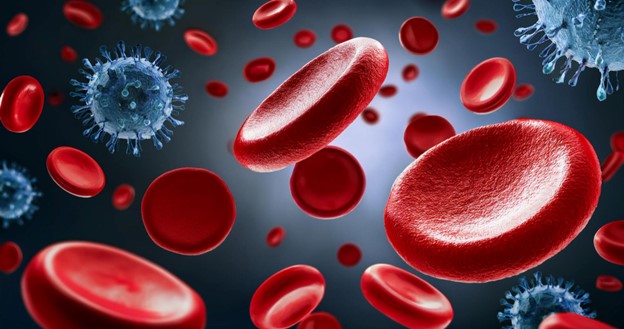Thrombocytopenia, a medical condition, directly affects the blood’s ability to clot. This condition happens when the platelet count in the blood falls too low. Platelets are small cells that help stop bleeding by forming clots. Lower levels can lead to serious bleeding problems, so understanding this condition is crucial.
Raising awareness about thrombocytopenia is important. It helps people know more about prevention and recognize symptoms early. By spreading knowledge, we can encourage timely diagnoses and better management. This understanding empowers those affected to seek help and adopt preventive measures.
What is Thrombocytopenia and Why It Matters
Thrombocytopenia definition is simple: it’s a state of having fewer platelets than normal. These decreased platelet levels can cause trouble because platelets are key players in blood clotting. Without enough, the body may struggle to stop bleeding, even from small injuries. This makes everyday life tricky and potentially dangerous.
A specific type of thrombocytopenia is called idiopathic thrombocytopenic purpura (ITP). In this form, the body mistakenly attacks its platelets as if they were harmful invaders. This self-attack lowers platelet count and can cause more frequent bleeding or bruising. Living with ITP might mean having to take special care to avoid injuries.
People often worry about thrombocytopenia due to the potential health risks. But everyday activities can be managed with a few adjustments. It’s essential to separate myth from fact. For instance, many think low platelet count always leads to severe bleeding. But the body’s response varies widely among individuals.
Understanding the facts helps in making informed choices. Recognizing symptoms of decreased platelets like easy bruising or prolonged bleeding is part of the battle. Early detection enables better management, making it easier to live with thrombocytopenia.
Additionally, many believe thrombocytopenia is rare or only affects certain people. However, it can occur in anyone, regardless of age or lifestyle, so general awareness is key. This doesn’t mean living in fear but calls for being informed.
Causes, Symptoms, and Diagnosis of Thrombocytopenia
The reasons for low platelet count vary. Main causes include decreased production in the bone marrow, increased destruction, or sequestration of platelets where the spleen holds back more platelets than usual.
Recognizing symptoms of low platelets is crucial for timely interventions. Keep an eye out for signs like:
- Easy or excessive bruising
- Prolonged bleeding from cuts
- Fatigue
The earlier these symptoms of low platelets are spotted, the quicker you can consult a healthcare provider. Identifying thrombocytopenia starts with simple blood tests to check platelet counts. Your doctor may also check for bruising or other physical symptoms.
Watching lifestyle habits helps in preventing thrombocytopenia. A healthy diet supports platelet production. Some foods, like leafy greens, lean meats, and citrus fruits, contribute positively. Hydration and regular exercise also play roles in body function.
When diagnosing thrombocytopenia, besides blood tests, doctors might look at medical histories and conduct physical exams. These help to clarify the reason for thrombocytopenia.
Understanding itp purpura (a type of thrombocytopenia) conditions and being aware of body changes aids in effective management. It’s equally vital to know when to seek medical advice.
Managing Thrombocytopenia: Treatment and Lifestyle Strategies
Handling thrombocytopenia involves a combination of treatments and lifestyle adjustments. Medications to boost platelet count increasing medicine are often prescribed. These drugs aim to shield platelets from destruction.
Sometimes, treating underlying causes addresses thrombocytopenia more effectively. Integrating traditional medicine with alternative therapies can enhance outcomes. For example, some find acupuncture or specific herbal supplements helpful after discussing with their doctor.
To manage daily life with thrombocytopenia: – Avoid activities that could cause bruising or injury, like contact sports – Monitor for new or worsening symptoms – Follow doctor’s orders concerning medications and check-ups
Wearing protective gear and keeping surroundings safe minimizes injury risks. Look for signs that might need urgent medical attention, like unexpected bruising or bleeding.
Consulting healthcare experts ensures tailored advice, particularly if there are changes in health. Every individual is different, and even with similar conditions, treatment plans should be personalized.
In conclusion, understanding thrombocytopenia helps reduce anxiety around the condition. While it requires awareness and adjustments, those living with this condition can lead fulfilling lives with the right support and knowledge.
